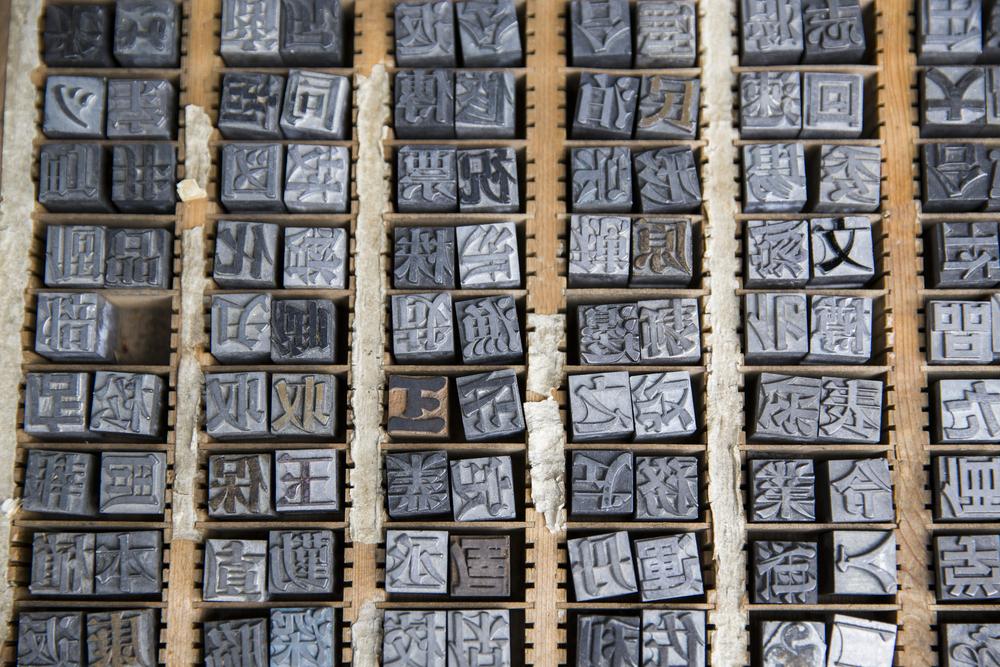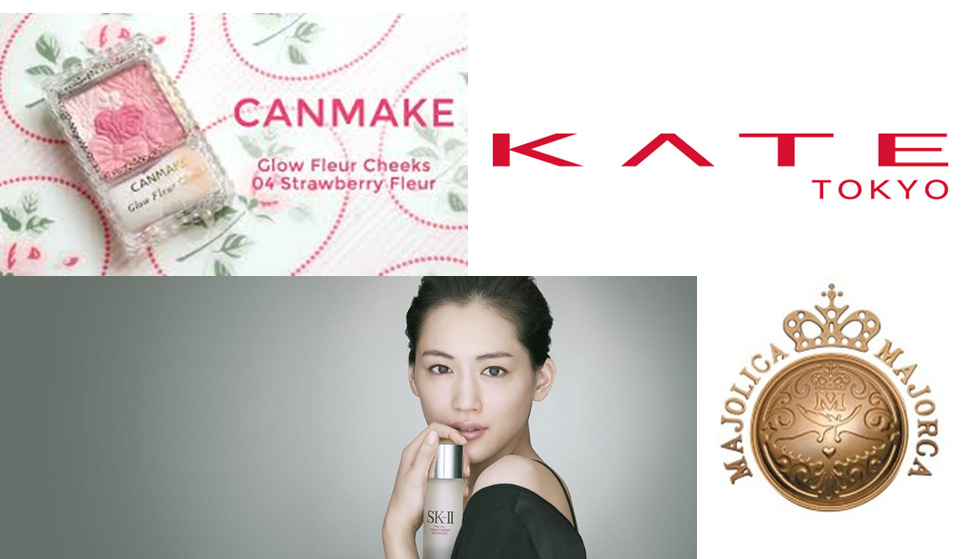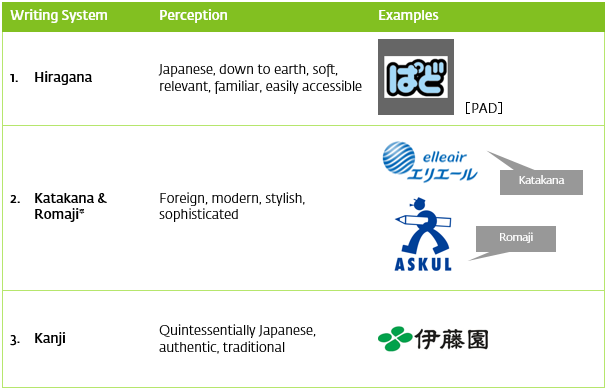

The age old allure of Japanese culture is attributed in part to the mysterious co-existence of complexity and simplicity in its history, language, and traditions. But what about Japanese brand naming? Do best practices for Latin or Chinese naming also apply in Japanese? Or are Japanese names, like the culture, somewhat elusive?
For non-Japanese brands just entering the market, brand naming may at first seem incomprehensible due to multiple writing systems, an extensive set of language rules, and the notorious cultural uniqueness. And yet, in Japan you will constantly see and hear foreign words seamlessly interwoven into communication. With Katakana for example, one of the Japanese writing systems, foreign words can be transliterated to allow for similar pronunciation with a slight Japanese accent, which isn’t always possible in character-based Mandarin. So what’s a brand to do?
As global brand naming experts, Labbrand has crystalized several insights on Japanese naming that are important for brands to be aware of. This article will tell you how it all started, what makes Japanese naming unique, and how the mix of foreignness and Japanese-ness in a name can be delicately designed to achieve a brand’s objectives.
Decoding the Cultural Background
The first important step is to understand where it all came from.
Contrary to popular belief, this island nation whose border was once closed for 200 years in an effort to preserve and foster its culture, has modernized and evolved by also adopting foreign cultural materials and reformulating them into a more Japanese formats in creative ways.
In the early days, Japan brought significant cultural ingredients from its neighboring country, China, and blended them with its own, to reach a new height of cultural sophistication and civilization. One of the obvious examples is the Chinese written script (Hanzi), known nowadays as Kanji. This selectively adopted writing system has played an essential role throughout Japan’s history in driving the intellectual and economic development of the country.

The second critical point arrives when Japan and China went their separate ways postwar, and Japan experienced a unique form of economic development. The emergence of what can be considered quintessentially Japanese began in this period, along with a mindset of admiration for Western cultures. This phenomenon is still clearly reflected in modern Japanese culture in the form of strong (if not dominant) Western codes in almost every aspect of life, be it sports, entertainment, household products and the like.
Naturally, these cultural adaptations have had a tremendous influence in shaping the context for Japanese naming. So let’s take a closer look.
What Is Unique About Japanese Naming?
Putting technical aspects aside, there are 2 essential components that make Japanese naming unique.
First and foremost is the ubiquitous presence of foreign cultural content and the role this plays in the market. As mentioned earlier, most people in Japan grew up with a mindset of admiration towards anything that came from the West, and the adoption of foreignness became a code for Japanese to express modernity, style and sophistication, and to present an international image.
This can be clearly seen in the naming conventions in some industries. The most obvious would be fashion (Comme des Garçons, A Bathing Ape, Uniqlo, Beams+, United Arrows), cosmetics (Canmake, KATE, MAQuillAGe, KOSE, SK-Ⅱ) and canned coffee (BOSS, FIRE, GEORGIA, WONDA) where codes of foreignness are advantageous for building positive brand associations.

Japanese Fashion Brands

Japanese Cosmetics Brands

Japanese Coffee Brands
The second unique feature is the distinct perception each writing system creates when used in naming. As we can see from above examples, Japanese companies do not avoid the use of English alphabet in their naming, and also include made-up Japanese words written with the English alphabet (called Romaji). The table below summarizes the existing writing systems, and the connotations each system can project.

*Katakana & Romaji are both used to transliterate and describe the sound, but while katakana is Japanese (アイウエオ) and used for foreign words, Rōmaji is Roman alphabet used for Japanese words.
How can a brand play with foreignness and Japanese-ness when developing names?
Just as Chinese people would immediately recognize foreignness in Chinese brand names when they see certain Hanzi (characters) or unusual character combinations, Japanese perceive foreignness when they see Katakana or Roman alphabets (romaji/foreign words) in a brand name.
Yet, for Japanese naming, those writing systems are often combined to form a name, thus triggering the question: when foreignness and Japanese-ness are combined, what is the consequence of that marriage? Japanese are proficient at blending foreign culture with its own, to produce what is called ‘uniquely Japanese’. In other words, once foreignness is adapted to or blended with Japanese elements, it automatically becomes uniquely Japanese, at the same time not losing its inherent appeal.
Below are illustrations of how the different writing systems and cultures (Japanese and western) are combined to produce uniquely Japanese brand names in the eyes of Japanese audience.

Lastly, it is important to clarify what we call authentic Japanese brand names. Here, authentic is defined as the name not conveying any connotations of a foreign language or culture.
There are number of unique approaches to developing this type of name: some will follow a more globalized naming process but still end at an authentic Japanese name, while others are products of Japanese cultural specifics. For instance, a very popular green tea brand uses a short conversational phrase as their brand name:お~い お茶 (Ooi, Ocha), which is a traditional way of a man asking his wife for a cup of green tea, proving to be a distinctive naming approach.
Moreover, authentic Japanese brand names are more widely used in product categories that are perceived to be very Japanese: like sake, rice, green tea to name a few, and also those that seek high relevance and familiarity with customers.

Brand ‘Ooi, Ocha’
Key Takeaways
Japanese naming is versatile in composition, and in its connotation can draw upon a multitude of cultures. But at face value, it can seem monocultural. Brands in this market need to first clarify what is the strategic positioning of the brand, what are the brand attributes to be emphasized and communicated, investigate the naming practice in the industry, and identify a key creative naming direction and approach that provides a perfect fit between what the brand strives to communicate, and what the market is ready to embrace.
So it turns out, like all things Japanese, brand naming is both simple and complex. But that’s what makes it fascinating.
A Labbrand Group Company © 2005-2024 Labbrand All rights reserved
沪ICP备17001253号-3To improve your experience, we use cookies to provide social media features, offer you content that targets your particular interests, and analyse the performance of our advertising campaigns. By clicking on “Accept” you consent to all cookies. You also have the option to click “Reject” to limit the use of certain types of cookies. Please be aware that rejecting cookies may affect your website browsing experience and limit the use of some personalised features.